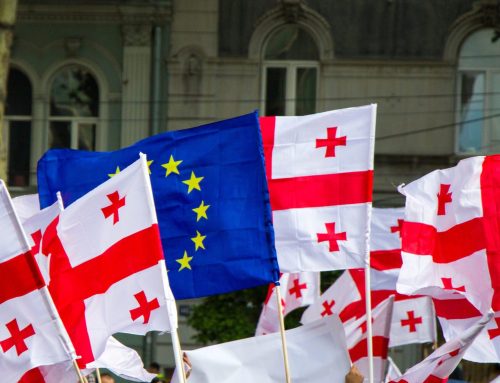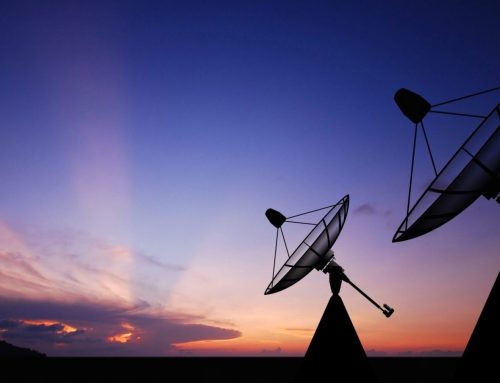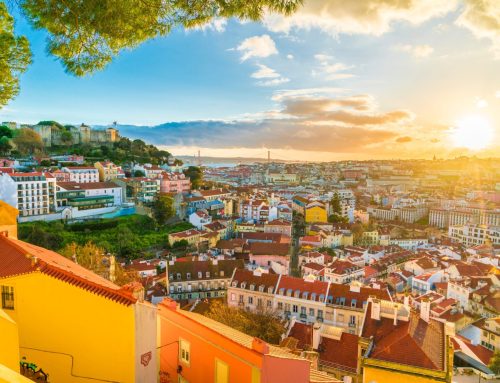Hamilton 2.0 is an interactive tool that monitors the outputs of Chinese and Russian state media and government officials across a range of social media platforms. The weekly report provides a summary analysis of the most salient topics and narratives promoted by state-backed actors during the specified date range.
Russia
Monitored Russian accounts tweeted 34,518 times from November 16 to November 29, generating 329,205 retweets and 1,023,063 likes.
War in Ukraine
Kremlin-linked accounts tried to justify widespread Russian attacks against Ukrainian infrastructure, which left many in the country without electricity or water. Several diplomatic accounts argued that the strikes were retaliation for Western efforts to arm Ukraine. Russia’s UN account framed the attacks as defensive, saying they were designed to undermine the Ukrainian army, “which threatens the security and territorial integrity of Russia.” State media shared claims that the missiles hit “all designated targets” and were making a difference on the front. They also noted that some Ukrainian officials and energy operators had suggested that people relocate to better manage the limited energy supplies available after the bombings. Lee Stranahan, a Sputnik radio host, asked if people would leave Kyiv. Other accounts argued that Western condemnations of the infrastructure attacks were hypocritical and drew attention to past Western military interventions.
Russian propogandists were outraged by a series of videos that appeared to show Ukrainian soldiers executing at least 11 captured Russian fighters. The Russian Ministry of Foreign Affairs tweeted that “Zelensky and his allies will answer for every prisoner of war killed” and warned that “nobody will escape retribution.” State media accounts claimed that the video represented one of many instances where Ukrainian forces had committed war crimes. Sputnik host George Galloway retweeted a post that claimed, “This is what your [Western] tax dollars are doing in Ukraine.”
Russian diplomats also insisted that US support for Ukraine meant that Washington had become “a party to the conflict.” Russia’s UK Embassy tweeted that the West was seeking to profit off weapons shipments and to test its military equipment in Ukraine, which could ultimately lead to a situation where Ukraine “become[s] just a #blackhole without anything.” Ahí les Va, an RT en Español-linked account, retweeted Glenn Greenwald complaining about the amount of US aid to Ukraine, and RT showcased Fox News host Tucker Carlson arguing that Ukrainian President Volodymyr Zelensky was a “corrupt strongman” who “demands” US money.
Meanwhile, Moscow-backed accounts blamed Ukraine for firing missiles at the Russian-controlled Zaporizhzhia nuclear power plant. Diplomats tweeted that Ukraine held the “entire world at gun point” and was endangering the “lives of all Europeans.” After Ukraine blamed Russia for the attacks, one diplomatic account said Zelensky’s statements around the nuclear plant were “ludicrous” and compared them to Zelensky’s accusation that Russia had launched a missile that killed two people in Poland on November 15. NATO said there is no evidence that Russia had intentionally attacked Poland. Also last week, propagandists denied rumors that Russian forces were planning to withdraw from the Zaporizhzhia power plant.
Finally, propagandists highlighted Russian President Vladimir Putin’s meeting with mothers of soldiers. State media showed Putin expressing how much he valued the mothers’ opinions, how he shared their pain, and how the Russian state would ensure they were cared for. He also used the occasion to say he regretted not annexing parts of Ukraine sooner and that Ukrainian soldiers were being used as cannon fodder.
Protests in China
Monitored Russian accounts offered relatively limited commentary on the protests that broke out in China against the country’s “zero covid” strategy. China was only the eighth most mentioned country by Russian state media and diplomats last week. Throughout all of 2022, China has been the fifth most mentioned country. State media’s limited coverage of the protests was largely factual, though some posts were slanted in favor of the Chinese government. Individual state media contributors, though, were more vocal in their support for Beijing. One account suggested that the US government was behind the protests in China. Others argued that Western media outlets were supporting Chinese anti-lockdown activists when they had criticized anti-lockdown protesters elsewhere. RT host Afshin Rattansi tried to minimize the protests by saying that thousands of demonstrations break out every year in China.
Taiwan’s Elections
Kremlin-backed accounts celebrated the victory of Taiwan’s main opposition party in local elections, which led to Taiwan’s President Tsai Ing-wen’s decision to resign as the leader of the governing party. Sputnik host George Galloway retweeted a post that claimed, “The US Empire’s tool in Taiwan has been overthrown.” Others labeled Tsai a “NATO-proxy.” RIA Novosti ran an op-ed that argued “Washington suffered a crushing defeat in Taiwan.” Manila Chan, an RT host, retweeted a post that argued that “US warhawks” should be embarrassed by the election’s outcome. Overall, though, the elections received limited coverage.
China
Monitored Chinese accounts tweeted 33,915 times from November 16 to November 29, generating 162,459 retweets and 620,128 likes.
What Protests? Chinese Protests Met with Strategic Silence
During the studied period, Chinese diplomats and state media largely ignored the protests that have taken place in China over the past two weeks. None of the top ten key phrases or hashtags hinted at any level of discontent in the country. On the contrary, the top terms pointed instead to diversionary coverage of the World Cup in Qatar, China’s space program, or Xi Jinping’s participation in various international gatherings.
Among monitored accounts, there were very few mentions of terms like “Zhengzhou,” the city where factory workers’ dissatisfaction with employment terms was amplified by pandemic control policies, or “Urumqi,” Xinjiang’s capital where several people died in a fire that was widely seen by Chinese people to be a result of excessively strict lockdown measures. In the case of Zhengzhou, the nationalist tabloid Global Times was the only account to explicitly mention the workers’ protests, focusing on factory owner Foxconn as the main party at fault there. The fire in Urumqi was initially reported on by most state media outlets, including CGTN, Global Times, and Xinhua. China News Service also relayed, in Mandarin, the press conference in which local officials rejected accusations that their policies had prevented the evacuation of those trapped in the fire. However, none of the tweets about Urumqi mentioned the protests that followed the fire. More recent tweets mentioning the city only spoke of easing public health measures and the reopening of restaurants and public transport.
The silence surrounding the protests was so widespread that even the Chinese Ministry of Foreign Affairs’ (MFA) most hawkish spokesperson, Zhao Lijian, needed several moments to collect his thoughts before answering a question by a Reuters reporter about dissatisfaction with the Chinese Communist Party’s (CCP) zero-covid policies. In addition, the transcript of that press conference omitted any reference to the Reuters’ question or to Zhao’s answer.
The only Chinese account monitored on Hamilton 2.0 to explicitly refer to the protests was former editor-in-chief of the Global Times and still influential hawkish commentator Hu Xijin. On November 28, Hu acknowledged that protests were taking place but assured his followers that “China will not become chaotic.” The next day, he emphasized that the protesters’ “radical demands” were not supported by the majority. And on November 29, he warned that if the protesters persevered, the risks for them would increase “severely.”
Whataboutism and Allegations of Foreign Interference
The one protest-related episode that generated a significant reaction from Chinese diplomats and state media was the rough arrest of a BBC reporter who was covering a protest in Shanghai. In the same press conference where Reuters stumped MFA spokesperson Zhao, he was far more combative in his response to an AFP question about the arrest. He accused the journalist of being obstructive and the BBC of a “deliberate distortion of truth.” He followed with whataboutist accusations related to the United Kingdom’s treatment of protesters. Those accusations were widely relayed by Chinese diplomats like Assistant Foreign Minister Hua Chunying, the ambassador to Cuba (in Mandarin), and the consul general in Durban. Whataboutist arguments were so widespread that between November 16 and November 29 monitored Chinese accounts mentioned the United Kingdom (23 tweets) more than China (12 tweets) in tweets containing variations of the terms “protests” or “protestors.”
Otherwise, counter-messaging about the protests was oblique and appealed to patriotism and a broader sense of national unity, with many diplomats including Hua Chunying, the consul general in Belfast, and the Embassy to Sudan sharing the same slogan about “courage” to overcome an unnamed “great obstacle.” Shadowy foreign forces were also blamed. The most overt accusations came from Pakistan-based diplomat Zhang Heqing, who relayed official warnings to “crack down on infiltration and sabotage activities by hostile forces,” and from the consul general in Zanzibar, who alleged that “riot mongers” flew in “from Hongkong and Taiwan to Shanghai and some other big cities and pretended to be local protestors.” Other diplomats amplified claims made by others. For instance, the consul general in Kolkata relayed a message from a since suspended account claiming that some of the protesters’ messages contained foreign-sounding typos. He retweeted another anonymous account that accused the CIA of paying protesters.
The views expressed in GMF publications and commentary are the views of the author alone.







